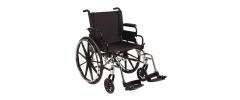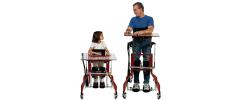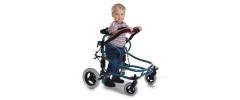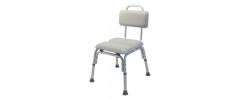Woundcare Products
Southwest Medical has a wide assortment of woundcare products. Here's an overview of the types of products we offer to help you determine what would work best for you.
Types of Wound Dressings
Wounds heal faster, with less pain and less scarring, in a moist environment. Advanced wound dressings work by hydration (adding moisture to the wound bed) or by absorption (absorbing drainage, thereby keeping the wound bed moist). Choose dressings according to the characteristics of the wound.
Wound Cleansers/Debriders
Gently cleanse wound before dressing application. They may contain ingredients that absorb drainage and/or deodorize the wound. Cleansers/ debriders are used to remove dead tissue while keeping healthy tissue intact. Enzymatic Debriders provide a clean base for optimal wound healing by digesting collagen fibers that anchor necrotic debris to the wound base. They are a supplemental source of collagenase, which supports a natural healing process. Require a doctor's prescription.
Hydrocolloid Dressings
Soft, absorptive, adhesive wafers that become gel-like as they absorb and are best used on lightly to moderately draining wounds. They are waterproof and impermeable to bacteria and contaminates. Easy application. Various thickness available. Not recommended for infected wounds.
Hydrogels
Transparent and water-based. They hydrate tissue and facilitate debridement using the body's own enzymes. Because of the relatively high water content, there is limited drainage and/or absorption. Some sheets and all gels need a cover dressing and tape to hold them in place and are easy to use. They require no mixing. Not recommended for moderate or heavily draining wounds because of limited absorptive ability.
Foam Dressings
Highly absorbent and generally made from hydrophilic polyurethane foam, offering a moist environment to insulate and cushion the wound. They require a cover dressing and tape, unless they are waterproof with an adhesive border. Conformable as well as comfortable, they will not stick to wounds or leave residue when removed. Can be used for heavily draining wounds.
Calcium Alginate Dressings
Derived from seaweed and available as sheets or ropes for packing deep wounds. They absorb moderate to heavy wound drainage and are capable of absorbing many times their own weight. Once applied they form a moist, gel-like covering and always require a cover dressing. Not recommended for lightly draining wounds.
Transparent Adhesive Dressings
Maintain a moist environment that is permeable to oxygen and vapor and impermeable to bacteria and contaminants. Because they are waterproof they may be used on blisters, superficial wounds or wounds with light amounts of drainage. They can also securely protect IV catheter sites. They allow evaluation of wound progress without removal of dressing. Application may be difficult for those with dexterity problems.
Collagen Dressings
Used for moderate to heavily draining wounds to enhance healing and tissue repair. Collagen dressings can be used on burns, pressure ulcers, scrapes, cuts and dermatologic conditions.
Silicone Gel Sheeting
Designed for temporary use in the management of both existing and new hypertrophic scars and keloids.
Compression Dressings
Apply controlled pressure to areas of the body to help control swelling and promote circulation, encouraging wound healing.
Charcoal Dressings
Have an activated charcoal layer that absorbs wound odor. Also used for wounds that may not heal, such as cancerous lesions. May require a cover dressing or tape to hold in place.
Non-adherent Dressings
Available non-impregnated or impregnated and discourage foreign matter from becoming lodged in the wound bed. They can be used on skin tears, donor sites and skin grafts. Most non-adherent dressings require a cover bandage or tape to hold them in place.
Have a question about which woundcare product should be used? Please contact our friendly and knowledgeable customer service representatives who would be happy to discuss the options available so you can make an informed decision.
 Southwest Medical
Southwest Medical




























































